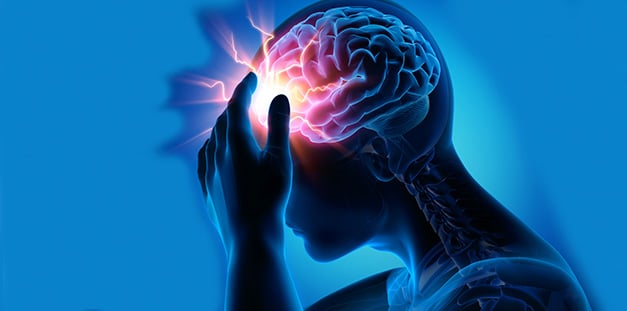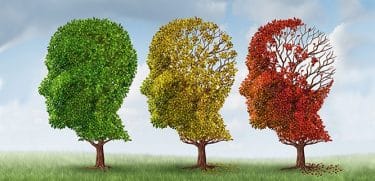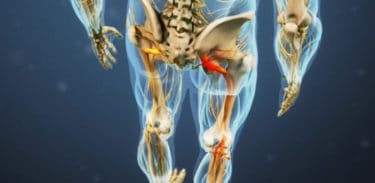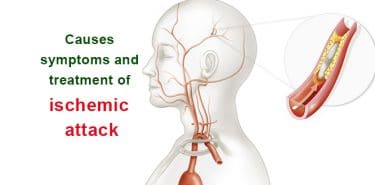Epilepsy is a type of brain disease that causes recurrent seizures; erroneous signal transmission of nerve cells or neuron clusters in the brain leads to seizures. Patients may have odd sensations or act strange. Epilepsy can cause severe muscle spasms or loss of consciousness. Certain diseases, brain damage and abnormal brain development can lead to epilepsy. Most of the time, however, root cause is unknown. It is crucial to start treatment immediately. Currently there is no treatment that fully cures epilepsy, colloquially known as ‘falling sickness’, however, drugs control the seizures for most patients. If drugs are ineffective, surgery or implanted devices like vagus nerve stimulator can be helpful. Some children can also benefit from special diets.
Table of Contents
What is epilepsy?
Clinical presentation involving loss of consciousness, various disorders related to movement, sensation, autonomic and psyche due to periodic and excessive electrical discharge of cerebral cortical or subcortical neurons is called seizure. Recurrent seizures that have become chronic are called epilepsy. Epilepsy is a chronic disease characterized by recurrent, undetermined seizures.
A person is diagnosed by epilepsy in presence of two unconscious seizures that are not related to certain medical conditions involving alcohol consumption or high blood sugar.
Epilepsy causes
The cause of epilepsy cannot be determined for 60% of the patients. Many factors can cause seizure. Possible causes are:
- Traumatic brain damage
- Scar tissue in the brain after a brain damage (post-traumatic epilepsy)
- Serious disease or very high fever
- Stroke is one of the most common causes of epilepsy in people older than 35 years of age.
- Other vascular diseases
- Lack of oxygen in the brain
- Brain tumor or cyst
- Dementia or Alzheimer’s disease
- Maternal drug use, pre-birth injury,
- Malformation of the brain or lack of oxygen during labor
- Infectious diseases like AIDS and meningitis
- Genetic or development disorders or neurological diseases
Genetics are effective in some types of epilepsy. In the general population, there is a 1% chance of epilepsy development before the age of twenty. Epilepsy is associated with genetics and the risk increases by 2-5%.Genetics may lead people to be more sensitive against environmental triggers. Epilepsy can develop at any age. Diagnosis is generally made in early childhood or after 60 years of age.
Symptoms of epilepsy
- Changes in the senses of taste, smell, hearing or touch
- Dizziness
- Tingling and joint twitches
- Complex partial seizures involve loss of consciousness
- Other symptoms include:
- Blank stare
- Unresponsiveness
- Recurrent movements
- Seizures are the main symptom of epilepsy
- Symptoms may vary among individuals and depending on the type of the seizure.
Tonic seizures cause muscle rigidity. Atonic seizures cause loss of muscle control and lead to sudden falls. Clonic seizures are characterized by jolting and recurrent muscle movements in the face, necks and arms. Myoclonic seizures cause spontaneous fast twitches in the arms and legs.
Symptoms of tonic-clonic seizures are:
- Stiffening of the body
- Shaking
- Loss of bladder or intestinal control
- Biting tongue
- Loss of consciousness
Epilepsy diagnosis
If there is a suspected seizure, a doctor must be consulted as soon as possible. A seizure can be a symptom of a serious medical problem. Doctor will consider both medical history and symptoms to decide the most helpful tests.
- Neurological examination: It will be necessary to test motor skills and cognitive functions.
- Blood tests: For epilepsy diagnosis, other conditions that cause seizures must be eliminated. Blood tests can be requested to exclude certain diseases. These diseases include; infectious diseases, liver and kidney disease and diabet
- Electroencephalogram (EEG): It is the most common test used for epilepsy diagnosis. First, leads are attached to the scalp using a paste. This is a non-invasive and painless test. Patients may be asked to perform a certain task during the test. In some cases, test is conducted during sleep. Leads record the brain activity. Changes are normal brain wave patterns are common in epilepsy, whether there is a seizure or not.
- Imaging techniques: They can reveal tumors or other abnormalities that may cause the seizures. These tests include: Computed tomography (CT), Magnetic resonance imaging (MRI), Positron emission tomography (PET) and Single photon emission computed tomography.
Generally, epilepsy can be diagnosed easily if the seizures are caused by apparent or reversible reasons.
First aid for epileptic seizures
Seizures generally do not require emergency medical assistance. As complications occurring during the seizures will require emergency medical intervention, immediately referring to a healthcare center is a necessity. These conditions include:
- If the person had no prior seizure history
- If the person is struggling to breathe or sleep after the seizure
- If the seizure lasts longer than 5 minutes
- If the person experiences consecutive seizures.
- If the person is injured during seizure
- If the seizure has taken place in the water/
- If the person has a medical condition like diabetes or cardiac problems or if pregnant
There are many types of seizure. Many seizures stop within a few minutes. Person must remain completely conscious (alert) until the seizure stops. After the seizure is stopped, the person must be seated in a safe place, and told about what had happened in simple terms if they are responsive and open to communication.
Other ways to assist:
- Comfort the person and speak calmly
- Check if they have a medical bracelet or emergency information
- Slightly rotate the person sideways. This will help them breathe.
- If there is any hard or sharp objects around the person, clear the area against potential injuries.
- Place a soft and flat object, like a folded coat, underneath their head
- Remove the glasses
- Loosen ties or any other accessory around the neck that may make breathing difficult.
- If the seizure lasts longer than 5 minutes, immediately contact medical experts
Never do the following during an epileptic attack
- Do not hold the person downwards or try to prevent their movement
- Do not put anything in their mouth. This may damage the teeth or jaw. Do not fear; person having a seizure will not swallow their tongue
- Do not try to give breath from mouth (like CPR). People generally start breathing on their own after the seizure
- Do not give water or food until the person is fully conscious.
Types of epilepsy seizure
Seizures are generally classified in two main groups: Generalized seizures and focal seizures. The difference between seizure types is related to the location in the brain and the way of onset.
- Generalized-onset seizures: These seizures affect both sides of the brain or cell clusters in both hemispheres simultaneously. This term includes previously used and tonic-clonic, absence or fewer atonic seizure types.
- Focal-onset seizures: The term of focal is more accurate than partial to describe the onset location of the seizure. Focal seizures may start in an area or cell cluster on one hemisphere of the brain.
- Focal Onset Aware Seizure: If a person is awake and aware during the seizure, this is called focal onset aware seizure. This is a simple partial seizure.
- Focal Onset Impaired Awareness: If a person is surprised and confused during a seizure or their awareness is affected, this is called focal impaired awareness seizure. This is a complex partial seizure.
- Unknown onset seizures: When the onset is not known, it is called an unknown onset seizure. If seizures occur at night or for a person living alone, and not witnessed or seen by others, it can be described as unknown onset seizure. When more information is obtained, unknown onset seizures can be diagnosed as focal or generalized seizure later on.
Is there a cure and complete treatment for epilepsy?
It is crucial to start treatment as soon as possible after epilepsy diagnosis. Seizures can be controlled after diagnosis with modern drugs and surgical treatments in approximately 70% of the patients. Some drugs are more effective for certain types of seizures.
Epilepsy treatment
It is important to start treatment as soon as possible after the diagnosis of epilepsy. Epilepsy can be controlled by approximately 70% of patients after diagnosis, with modern medications and surgery. There are many types of drugs that can be used for epilepsy, and these are successful in most patients.
Epilepsy medications
Anti-epileptic drugs (AEDs)
These drugs reduce the number of seizures and remove seizure incidents. Drugs must be used exactly as prescribed for maximum efficacy.
- Valproic acid: One of the most commonly used drugs. It is usually taken twice a day. (Convulex, Epilim Chrono, Epilim Chronosphere)
- Carbamazepine: It can be started at low dose and up to 1800 mg / day. (Carbagen, Tegretol, Tegretol Prolonged Release)
- Levetiracetam: Its side effects are less than other drugs. It is usually preferred in elderly and in people with different diseases. (Desitrend, Keppra)
- Oxcarbazepine: Its allergic effects are less than carbamazepine. Its activity is lower than carbamazepine. (Trileptal)
- Phenytoin: Today the oral form is not preferred because of its side effects. Repetitive seizures can be applied intravenously immediately. (Epanutin, Phenytoin Sodium Flynn)
- Lamotrigine: It is preferred as the second drug added to the treatment. (Lamitcal)
- Other drugs: Phenobarbital, benzodiazepines, gabapentin, pregabalin, zonisamide, etosuximide, vigabatrin, topiramate
While using epilepsy medicine:
- Epilepsy medications should be taken regularly. One of the reasons for occurrence of seizures in patients is skipping the drug dose.
- There may be disturbances in blood values while taking medication. Therefore, a blood test should be performed every 6 months.
- Epilepsy drugs can disrupt the effectiveness of other drugs, and many drugs have effects on epileptic drugs. For this reason, you should always tell your doctor that you are taking epilepsy medication.
- Side effects such as weakness, fatigue, dizziness, tremors in hands, hair loss may occur. Contact your doctor for the treatment of side effects.
Epilepsy surgery
If seizures are not reduced with medication, surgery is another option. The most common surgery is resection. Surgery involves the removal of the brain part that initiates seizures. Most of the time temporal lobe is removed with a procedure called temporal lobectomy. Surgical method can cease seizure activity in most of the cases.
In some cases, patients remain awake during the surgery. The reason is to allow doctors to talk to the patient to avoid removing a part of the brain that control important functions like vision, hearing or movement. If the part of the brain to be removed is not as large or significant, there is another procedure called multiple subpial transection or disconnection.
Some patients can stop using antiseptic medication after the surgery. Although partial, there are risks involved in surgery, such as anesthesia, bleeding and a bad reaction against infection. Sometimes the brain surgery can result in some cognitive changes.
Vagus nerve stimulator
This device is surgically implanted under the skin over the chest and electrically stimulates the nerve passing through the neck. This may help to prevent seizures.
Ketogenic diet and Atkins diet
Ketogenic diet is frequently recommended for epileptic children. This diet is low in carbohydrates and high in fats. The diet puts the body in a process called ketosis and forces it to use fats instead of glucose for energy production. It requires a strict balance between fat, carbohydrate and protein.
Therefore, it is best to consult a nutritionist or work with a dietitian. Children using this diet must be carefully monitored by a doctor. Ketogenic diet is not beneficial for everybody.
However, it is generally successful at reducing the seizure frequency when properly followed. A modified Atkins diet can be recommended for epileptic adolescents and adults. This diet involves high fat and controlled carbohydrate intake. Almost half of adults trying a modified Atkins diet experience fewer seizures. Results can be in a matter of months. As these diets are low in fiber and high in fat, constipation is a common side effect.
Natural treatment for epilepsy
You should consult your doctor first before deciding on a herbal treatment for epilepsy. Remember, while some herbs can have healing effects, the opposite is also a possibility. There are medicinal plants that can be used against epilepsy. These plants include:
Mistel (Viscum album)
Being used for centuries, mistel is one of the best medication for epilepsy. Today, some doctors also accept the medicinal value of this plant and recommend it for chronic cramps and hysteria attacks.
Preparation and use: Keep half spoon of finely minced leaf and stem (its fruit is not used as its toxic) in a glass of cold water over night, slightly heat in the morning and drink slowly throughout the day before meal.
St. john’s wort, olymus arenarius, teltaria auiacea, platanus orientalis and vinegar and honey mixture are among medicinal herbs that are good for epilepsy.
Does epilepsy kill?
Sudden deaths due to unknown cause in epilepsy patients increased by 20 times compared to normal population. In addition, the wrong interventions or injuries during the seizures also cause death.
Recommendations for epileptic patients
- Knowing seizure triggers (like stress)
- Recording seizures
- Sufficient and regular sleep
- Exercise
- Less stress
References:1- Everything You Need to Know About Epilepsy, 2- All about Epilepsy, 3- Epilepsy Information Page, 4- What is Epilepsy?, 5- Epilepsy




